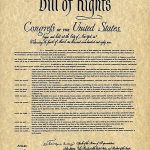
My previous article demonstrated how the free market solves a boom-bust crisis and is the only solution, its effectiveness depending upon the magnitude of the crisis and, more importantly, how much the government intervenes in response. The bigger the problem created by the Fed, the greater the crisis and the more government intervenes, and the slower the economy recovers.
Here we consider how the market works most effectively, with the efficiency of the process maximized by policy restraint. Like most illnesses, recessions can be “cured” with rest, hydration, nutrition, and fresh air, rather than major surgeries and dangerous medications.
The solution begins with getting rid of the initial monetary causes and allowing market participants, especially entrepreneurs, to adjust to the new conditions. Entrepreneurs will reallocate resources according to current consumer preferences and away from the previous policy allocations. There is no easy, straightforward market playbook for an individual entrepreneur to consult. Should a pizza restaurant stay open one hour later or use in-house delivery drivers? The owner could figure it out, but policy makers would have no idea of where to even begin to answer such questions.
Consequently, policy makers approach the problem with a high level of ignorance. Their policy “tools” are simplistic, nonspecific, and almost uniformly counterproductive. Therefore, any attempt at policy mitigation will only worsen and lengthen the negative impacts of the crisis. As Murray N. Rothbard concluded, “Government hampering aggravates and perpetuates the depression.”
However, the bureaucratic mind of public officials goes “warbling back to the fire” of more government intervention, and this is the big danger. They have no ideas or policy tools that work. The costs they impose and the agony they create are pain they do not endure themselves, creating huge burdens and destroying resources in the process.
Public officials might be lauded for their efforts to “do something” to address the crisis, but their efforts only undermine corrective and recovery efforts. FDR’s manic “New Deal” of government intervention in the Great Depression actually was a decade of dismal failure leading to catastrophe. Hence, we need to understand the crisis and the correct solution in order to avoid economic disaster.
Laissez-Faire
The correct policy to address the economic crisis is referred to as laissez-faire. The marquis d’Argenson used this phrase for the first time in print in 1751. It was first uttered years earlier by a French entrepreneur to the famous French finance minister and mercantilist the “Great Colbert” in response to a question of what the state can do to help the economy. (France ignored the advice, and a century later, French society was torn asunder by government intervention and hyperinflation.)
The phrase means “leave it to us” or more bluntly, “leave us alone.” There are many policies that enhance economic recovery and growth, but this standalone cure for the cycle crisis simply requires a noninterventionist government stance. This policy regime allows the curative process of the market to work as quickly, effectively, efficiently, and humanely as possible to resolve the crisis.
This solution is so unsatisfying to the bureaucratic mind that some specifics are in order. Here we borrow from Rothbard’s depression policy recommendations.
First, stop inflating the money supply and refrain from intervening in the credit markets. Ideally, markets should be alerted that this neutral stance is just the initial phase of a longer-term policy of monetary reform that involves the closing of the Fed itself and doing away with all the props to monetary policy, such as fiat money, fractional reserve banking, and the Federal Deposit Insurance Corporation.
Early social man viewed money suspiciously and latched on to the notion that money was the key to wealth disparities. It is true that during the transition from barter to money, fully monetized economies performed much better than barter and primitive economies. It was not until Richard Cantillon and David Hume wrote about it that money was recognized as a medium of exchange. Wealth and increasing wages could now be seen as the result of capital formation, production, and, of course, entrepreneurship, not more money per se. The mercantilist fallacy that money equals wealth became the basis of fiat money and central banking.
Second, provide no subsidies or bailouts to firms in financial trouble and let them fail of their own accord. As cruel as this may sound, the “cluster of entrepreneurial errors” and its resolution must proceed in its own course. Instead of a fixation on bailouts, firms should be focused on restructuring their operations toward profitability or proceeding into bankruptcy. Realigning ownership and resources toward profitability is the most salutary route for capital, labor, and consumers.
Providing “no barriers to exit,” such as subsidies and bailouts, is a primary requirement for “competition,” which is seen by most economists as an engine of progress. This is certainly true for Austrian economists, who only require that markets have no government barriers to entry or exit. Mainstream economists who recognize the importance of competition include many additional assumptions in their definition of “perfect competition.” Their assumptions make math-based economics generate their preferred policy outcomes but are unnecessary and unwise in the real world. Consequently, all monopoly policies should be stopped.
Third, saving should be encouraged because it provides the raw material for individual and market adjustment, protection, and progress. Individuals and companies with savings can sustain themselves and make the necessary market adjustments. Most importantly, savings mitigate the problems of drops in demand for products, unemployment, and job searching. Savings are also the raw material of entrepreneurship, whether that is starting a hot dog stand or a large factory.
In contrast, mainstream economists see consumption as the driver of economic activity, believing that increased consumption now will show up in future gross domestic product (GDP) reports. Hence, they view savings as “leakage” that prevents or stalls economic recovery. This mistaken belief fails to recognize the process of economic growth (savings => investment => capital formation => increased wage rates => increased consumption = higher GDP). There must be savings and capital, as well as labor and production, before consumption can begin. People don’t just decide to consume more!
Fourth, prices, wages, rents, interest rates, and profits must all be allowed to adjust for changing market conditions. Some mainstream economists grasp the wisdom of the free market but lose their grip on that wisdom when it comes to economic crises. The fact that prices, wages, rents, and profits fall precipitously in a crisis unnerves them and adds to the pressure on the political process to prevent prices from falling—and invokes the dreaded scourge of deflation.
Imbedded in this phobic reaction to falling prices are numerous fallacies and contradictions. Why keep prices high (which discourages consumption and wastes surpluses) while at the same time trying to encourage consumption? Why keep wages high while at the same time trying to reestablish full employment? Why keep a factory going when consumers don’t want its products or are unwilling to pay the going price for them? Such resources could be better used elsewhere.
Falling prices are the main feature of market corrections. Some people simply don’t believe in Say‘s law of markets because they can’t believe (re: understand) the ameliorating effects of cutting prices and wages that is deflation.
It should be clear that the wealthy have more to lose in an economic crisis and will have to make the greatest number of painful adjustments, at least in a market economy free of government intervention. However, the costs of an economic crisis are shared by capitalists, laborers, resource owners, entrepreneurs, and even those innocent bystanders not directly involved in the economy, such as children and the elderly. Those who acquired and saved the fewest resources during the boom may face hardships such as hunger and homelessness in the bust.
In my view, none of these groups are to be blamed. The free market did not cause the crisis. But for people working in the free market, adapting to the crisis is the solution. The interventionist approach to economic crises does little to relieve all this suffering and much to worsen and lengthen it. The best way to mitigate the costs of an economic crisis is this market-based approach. The interventionist approach fails and compounds the cost over time.
Concrete Solutions
The free market solution to crises brings forth a quick resolution to the problems in the economy. This is particularly true of the highly complex problems associated with the business cycle. Here, disturbances in money are filtered through the loanable funds market, consumer goods markets, and the production, investment, and technology decisions of entrepreneurs attempting to meet the expectations of consumers in an environment of multiple false signals. If a superhuman central planner could not rationally direct a static-stationary economy, then it is little wonder that politicians pushing a few policy buttons in the capital city could ever rationally reconstruct an economy fit for the current new conditions.
To highlight forcefully and objectively the four policy guidelines of a laissez-faire solution for economic crises, I will provide a couple of examples of what should be done in concrete terms.
First, no government bailouts. Companies, industries, nonprofits, and nongovernmental governmental organizations are constantly pleading for government handouts, indirect subsidies, and protectionism. The latest is college students and their enablers bellyaching for a bailout for students. Crises encourage all of them to seek ever larger and more permanent sources of funding from government. They should be told immediately, and in no uncertain terms, that no bailouts, cash or otherwise, are forthcoming. It is particularly important that lower levels of government be told there will be no bailouts from higher levels of government. This is necessary to prevent local governments from extending their financial responsibilities beyond their highest priorities. Individuals, companies, organizations, and governments must not be shielded from the possibility of bankruptcy.
Japan is the largest and most glaring example of the problems with bailouts. For more than a decade following their stock market bubble of the 1980s, the government and the Bank of Japan purposively kept a multitude of zombie corporations afloat with various subsidies and easy credit policies. Zombies induce a host of inefficiencies related to capital, labor, and technology and reduce economic and wage growth.
Second, do not subsidize unemployment. Eliminating unemployment insurance should be a priority. Workers should have every natural incentive to get employment and wages. Unemployment insurance is well known for causing harmful delays in getting and maintaining employment. In contrast, jobs in the market create income and production and are a vital component of economic recovery. One silver lining of the covid government lockdowns is the memory of the lingering high social costs of bailing out labor.
In this regard, repealing the minimum wage law would reinforce the laissez-faire policy message that labor and production are the way out of the crisis. You might ask, “If the minimum wage is now set below market-clearing levels and the resulting unemployment is nil, then what sort of statement would this send?” It would be a recognition of the futility of the minimum wage law to “help” labor, a recognition that the law hurts the most “at-risk” labor, that wages could fall steeply in a crisis, and that people might need and want a paying job despite a lack of job experience, skills, training, or even bodily strength.
Conclusions
Economic crises, such as those made inevitable by the Fed’s boom-bust cycle, are unfortunate events for most people. The policy of laissez-faire is the only way to rationally cure such a crisis. Interventionist measures only delay and worsen the crisis and its negative impact on people. History provides plenty of evidence regarding the widely divergent outcomes of these two policy regimes.
The speed of recovery is an important consideration. Laissez-faire gives quick results, while intervention delays recovery for much longer, accumulating foregone opportunities over the years, sometimes stunting the development of whole generations of people, and making many people incapable of achievement. In contrast, laissez-faire recoveries make people more independent, more resilient, and more likely to achieve.
Of course, even the smartest, most steadfast, and most rigorous laissez-faire regime will have political and emotional difficulties remaining steadfast in the face of hunger, homelessness, bankruptcies, foreclosures, and mass unemployment. Calls for public relief are already loud in modern America today. When the unemployment rate rises, the call will be further amplified by what once passed for journalism. It is important to frame these demands in terms that recognize that any such public relief for companies or individuals will harm and delay the long-term interests of society, including those targeted for relief. Relief is best provided by private charity.
If you are not a socialist or a progressive and you think this remedy is insufficient or unacceptable, I will end on an optimistic note. The free market is the only solution to the economic crisis and a relatively quick one at that, but it is also important to recognize that economic crises related to the business cycle are a problem that can be solved permanently. This is a topic I will address in a future article. Indeed, a successful laissez-faire recovery to today’s crisis could propel reformers to solve these longer-term institutional problems of monetary policy and public finance.





